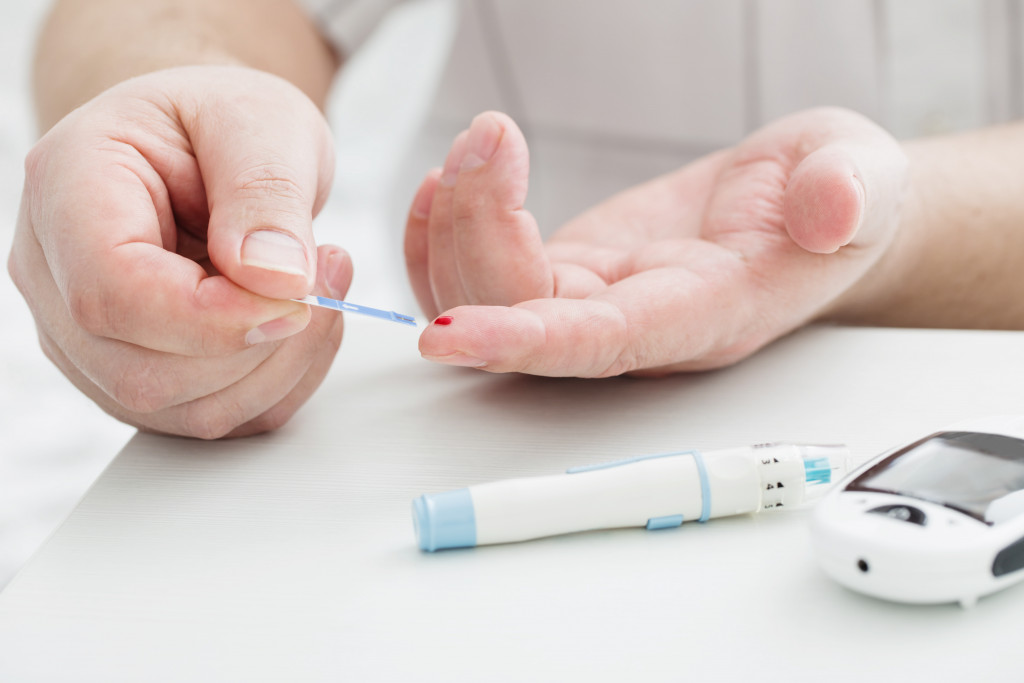Most women know about menopause. Barring any untoward incident, all ladies will get there. However, not many are familiar with perimenopause and how it affects the body.
That’s why it leaves several women in surprise – and frustration. What is it, and how can they cope with the changes?
What Is Perimenopause?
Perimenopause is the time leading up to menopause when a woman’s ovaries gradually stop producing eggs. It usually begins in a woman’s late forties or early fifties. The average length of perimenopause is four years, but it can last for up to 10 years.
During perimenopause, the levels of estrogen and progesterone in a woman’s body fluctuate. It can cause a wide range of symptoms, including hot flashes, night sweats, mood swings, fatigue, difficulty sleeping, and vaginal dryness.
It also introduces physical changes such as:
- Weight Gain: Bloating, fluid retention, and increased body fat are all common during perimenopause due to hormonal changes. On average, women’s weight could increase by five pounds. Obese women, meanwhile, could weigh even more. Fat could accumulate around the hips and belly area.
- Skin Hyperpigmentation: Melasma, or brown patches on the face, is common during perimenopause. Estrogen dominance (having too much estrogen relative to progesterone) is one of the causes.
- Loss of Bone Density: The decrease in estrogen levels during perimenopause can lead to a loss in bone density and an increased risk for osteoporosis.
- Hair Loss: Thinning hair is another standard physical change during perimenopause as estrogen levels drop.
4 Tips to Deal with Perimenopause
Perimenopause is a natural process, and many women eventually transition into menopause without any significant problems. Others, however, might struggle with the changes in their bodies.
These tips can help them deal with the transition:
1. Take Care of the Skin
The skin can take the brunt of the effects of hormonal changes. They can be more prone to hyperpigmentation like melasma, dryness, and even itchiness. There’s no better time to start taking care of the skin than today.
Women who want to even their skin tone can try applying a product with natural ingredients like tea tree oil. They can massage their face in circular motions to help brighten and detoxify the skin.
When melasma becomes more visible, tools like a laser pigmentation machine can help. The laser beam penetrates the skin cells to break up the pigment clusters while the lymphatic system removes them from the body. In turn, the process stimulates the production of new skin cells.
Ladies can also invest in a good moisturizer to hydrate their skin and skincare products like retinol, a vitamin A derivative that reduces the appearance of wrinkles by increasing the production of collagen.
2. Manage Stress and Practice Good Sleep Hygiene

Stress, anxiety, and sleep problems are common complaints among perimenopause women. During this time, it’s essential to manage stress and practice good sleep hygiene.
For starters, women can establish a regular bedtime routine that will help them wind down before hitting the sack. It could be something as simple as taking a hot bath or listening to quiet music.
Meanwhile, stress management tools such as deep breathing exercises and meditation can help them cope with everyday pressures. Others might want to try yoga or take up a more active hobby, like dance or hiking, to experience its calming effects on the body.
3. Get Moving
Exercise is one of the most effective ways women can reduce some of the physical discomforts associated with perimenopause, such as hot flashes, fatigue, and pain. Improving one’s physical activity also burns calories and helps manage weight.
But which exercise is excellent for perimenopausal women? The general guideline of 150 minutes of moderate-intensity exercise still works.
However, they should also engage their muscles through resistance or strength training, especially when they’re in their forties, to avoid losing a lot of muscle mass as they grow older.
4. Eat a Balanced Diet
A balanced diet is a key to maintaining overall health, which is especially important during perimenopause. Eating foods rich in antioxidants, for example, can help protect the body against the damage caused by free radicals.
Perimenopausal women should also include plenty of calcium- and vitamin D-rich foods in their diets to help maintain bone density. Foods like yogurt, salmon, and leafy greens are excellent sources of both nutrients.
Older women can also consider calorie deficit (or eating fewer calories than they’re used to). As hormone levels change, women’s metabolism can also slow down, which means they burn calories less.
Ladies who want to do calorie deficit can consult their doctor to ensure this step is safe. They can also use online calculators to find their ideal calories per day.
Perimenopause can be challenging for women, but they can manage the transition smoothly with the right tools. Taking care of the skin, managing stress, getting moving, and eating a balanced diet are excellent ways to make the process easier.



